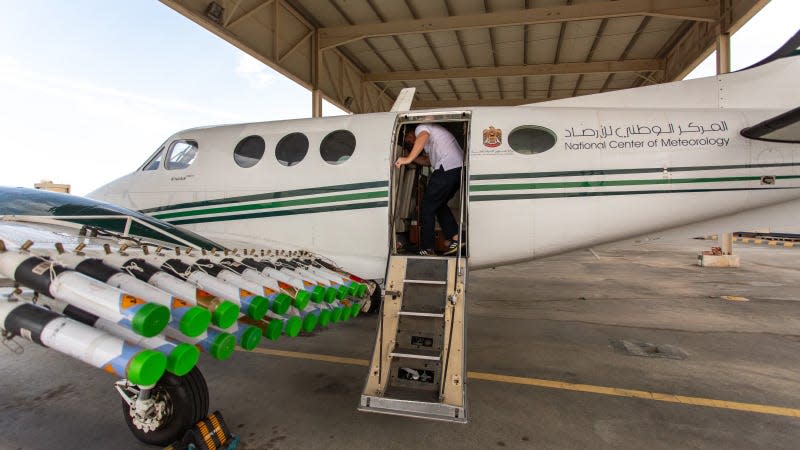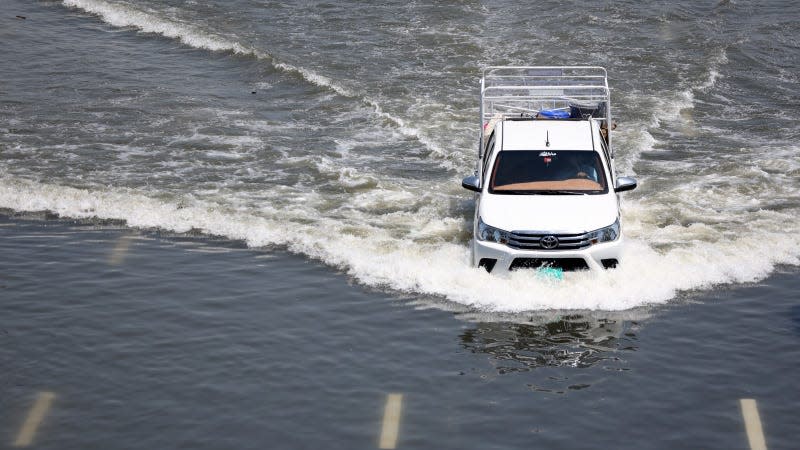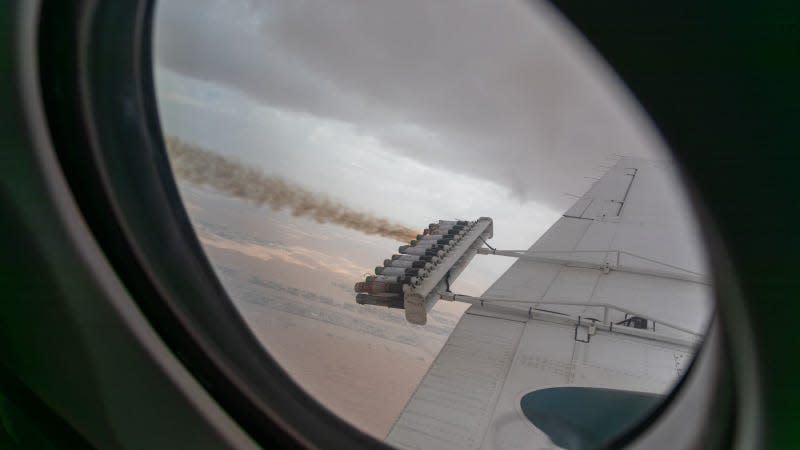Cloud-Making Aircraft Probably Didn’t Cause Dubai’s Record Flooding

Scientists are developing all kinds of wild tech to try and change our climate, including carbon capture machines to suck CO2 out of the atmosphere and special chemicals that can create rain clouds in places susceptible to drought. Now, those very creations are being blamed for record-breaking flooding in the Middle East, but experts say the flooding is much worse than they could ever cause.
Cloud seeding is the practice of sending small aircraft high into the sky to disperse specially-developed chemicals that can encourage the formation of rain clouds. Such practices are coming in areas susceptible to drought in an attempt to return water to the land and save crops and people.
Now, keyboard warriors around the world are claiming this practice was to blame for record flooding in Dubai and Oman, which saw more than 10 inches of rain fall on the region in less than 24 hours.

They think this because the United Arab Emirates frequently turns to cloud seeding to alter its weather, ABC News in Australia reports. In fact, “six or seven” cloud-seeding flights were reported in the build up to the storms, as ABC News explains:
Several reports quoted meteorologists at the National Center for Meteorology as saying they flew six or seven cloud-seeding flights before the rains.
Flight-tracking data analyzed by AP showed one aircraft affiliated with the UAE’s cloud-seeding efforts flew around the country on Monday.
However, experts explained that the flights couldn’t have caused this much rain to fall in such a short period of time, adding that the disastrous floods in the UAE were forecast long before the cloud-seeding flights took to the skies.

Instead experts say that the floods, which left airports in turmoil, roads flooded and even killed more than 20 people, were caused by plain old climate change. As ABC News reports:
Jeff Masters, a meteorologist for Yale Climate Connections, said the flooding in Dubai was caused by an unusually strong low-pressure system that drove many rounds of heavy thunderstorms.
“You don’t need cloud seeding’s influence to account for the record deluge in Dubai,” Mr Masters said.
Friederike Otto, a senior lecturer in climate science at Imperial College London, said it was misleading to talk about cloud seeding as the cause of the heavy rainfall.
“Cloud seeding can’t create clouds from nothing,” she said.
Cloud-seeding tech encourages moisture that’s already in the air to come together and cause heavy rain clouds, which can then dump all their water out as rain. However, the rain fall the tech can cause is on “a totally different scale” to Dubai’s floods, reports ABC News.
The heavy rainfall has instead been blamed on climate change in the region, with global warming meaning that severe weather events such as this are “likely to become much heavier and worse” in the years to come.

